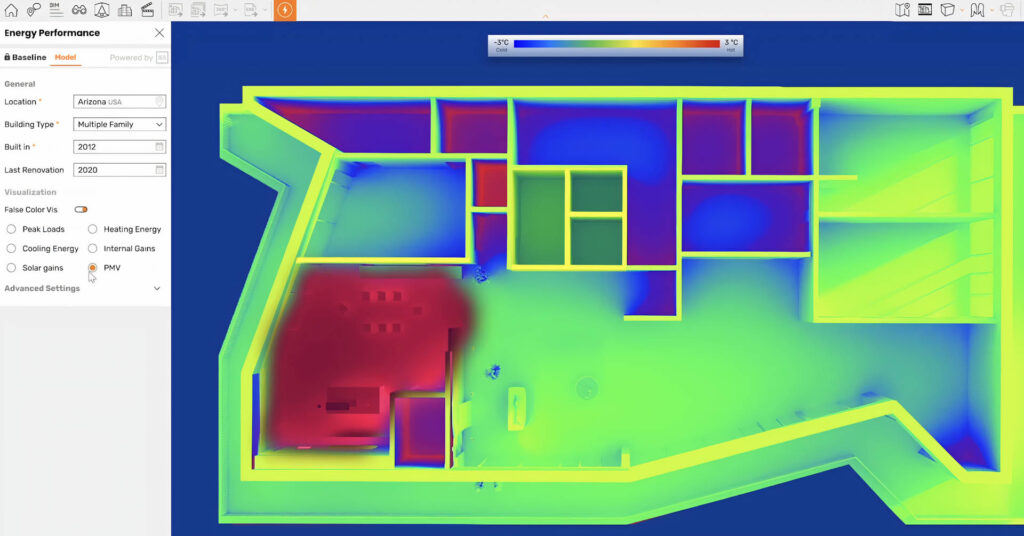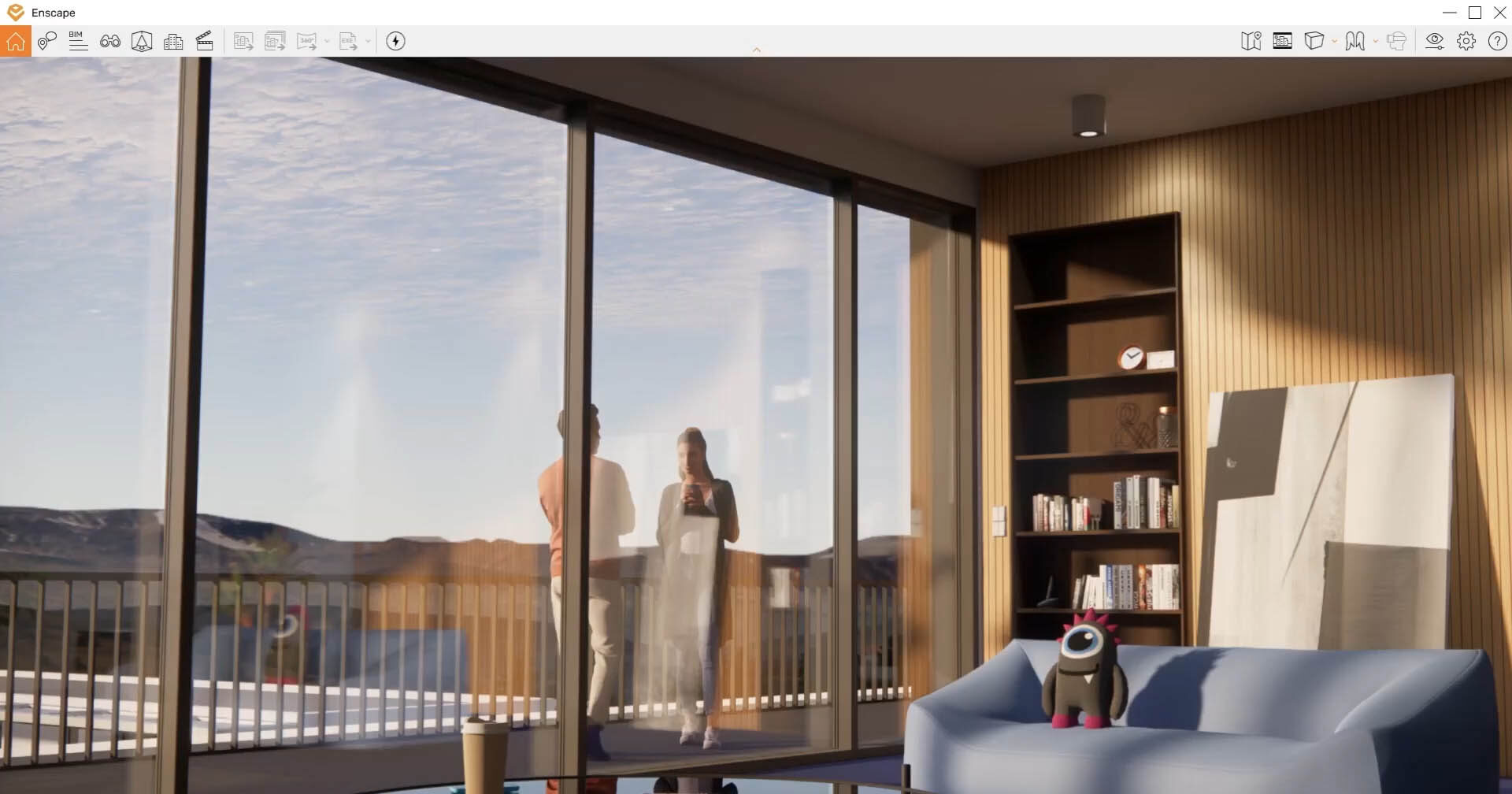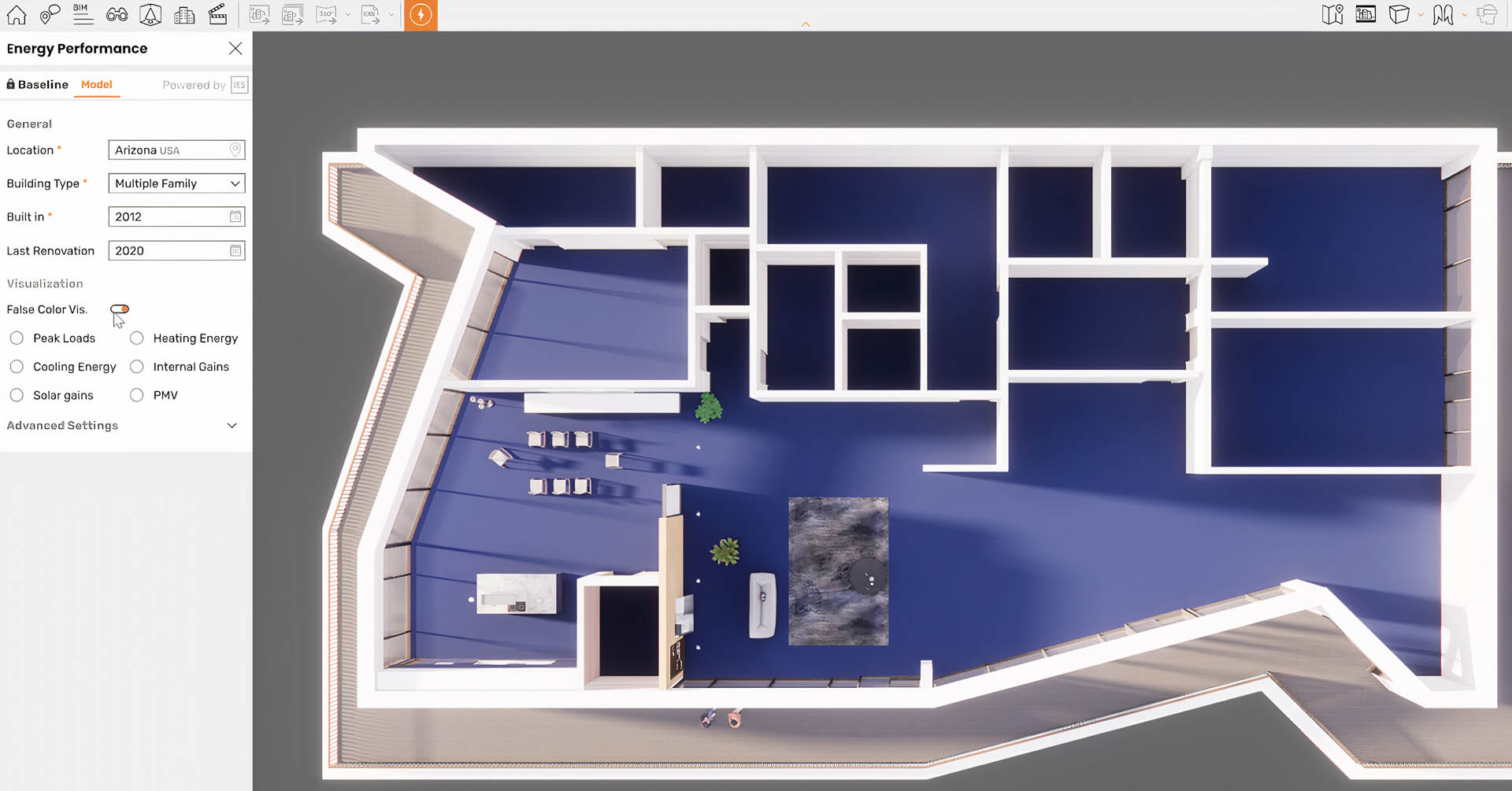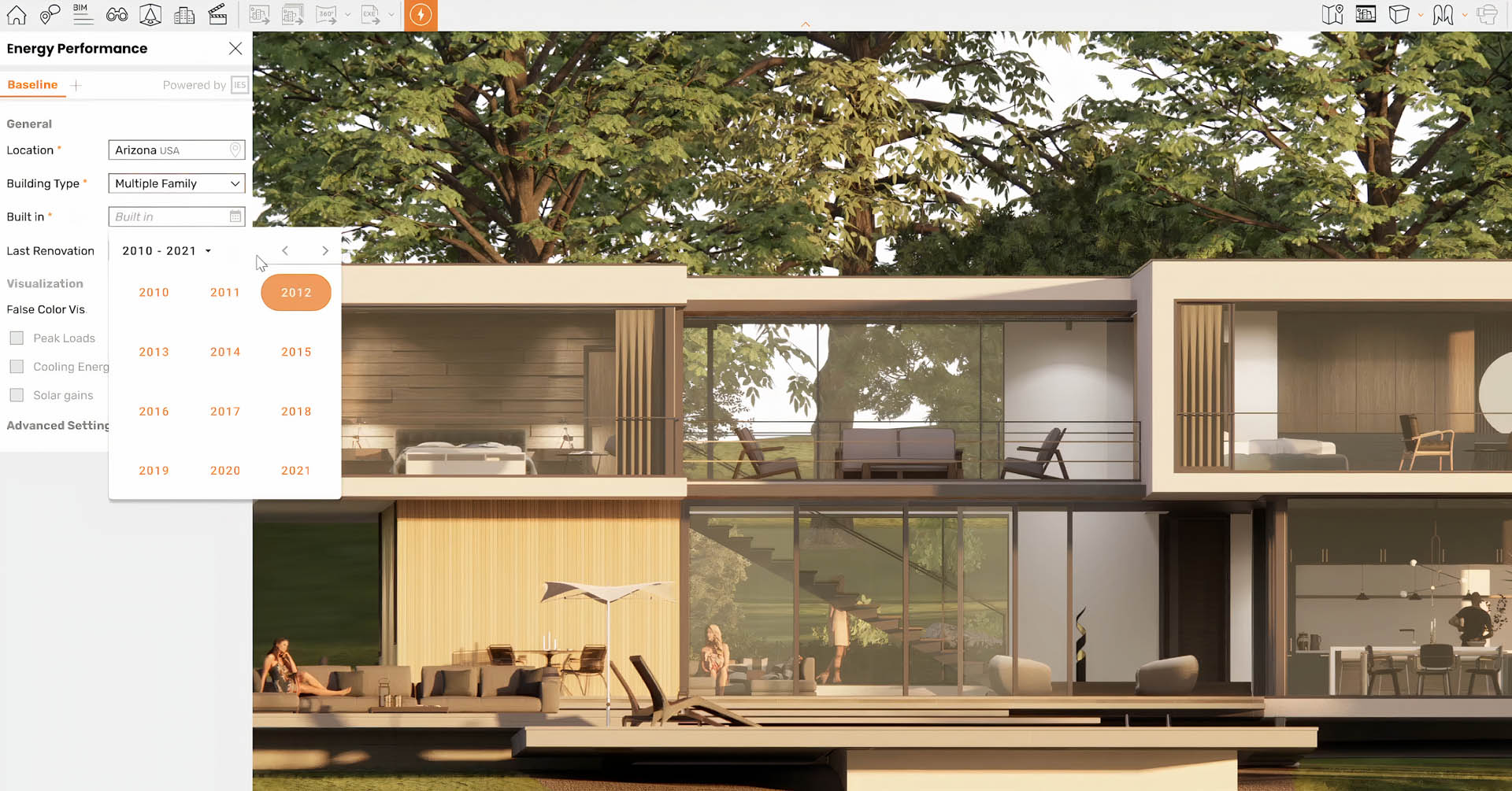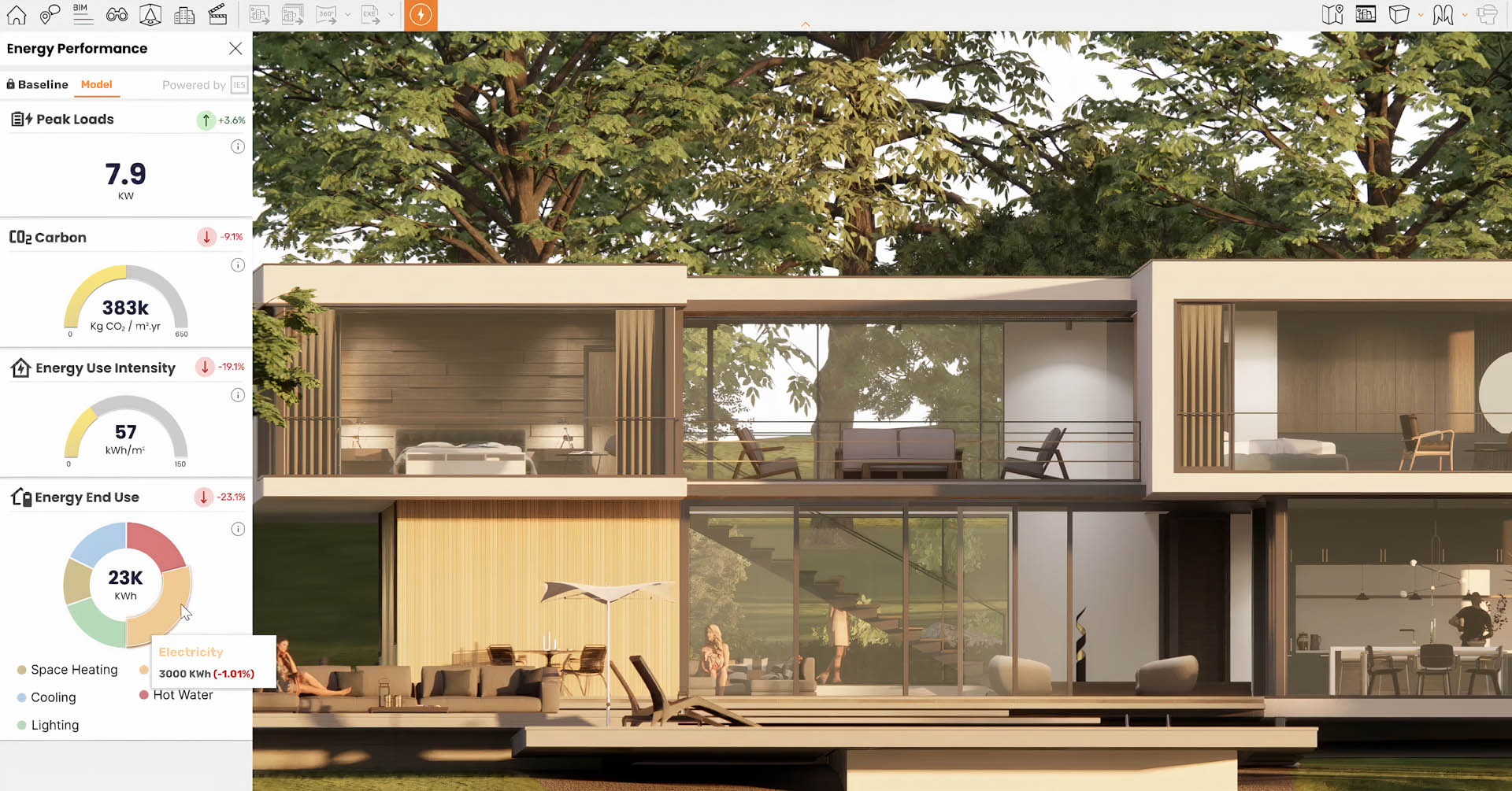Chaos recently gave a glimpse into the future of its real-time visualisation software Enscape, with a new module designed to give instant visual feedback on building performance. Greg Corke caught up with Kam Star and Petr Mitev from Chaos to find out more
Enscape by Chaos has become a firm favourite with many architectural practices. The real time viz tool transformed architectural visualisation by making it an integral part of the design process. It allowed architects to go from BIM viewport to visually-rich real time environment – on desktop or in VR – at the push of a button. Any changes made to geometry, materials, or lighting inside Revit, Archicad, Vectorworks, Rhino or SketchUp are reflected in Enscape almost instantly.
By getting highly realistic visual feedback in real time, architects can make informed decisions at every stage of the design process. It can help give answers to many questions. What will the façade look like if clad in aluminium? Will the glazing provide enough light for the interior? Would the building benefit from a larger atrium?
Chaos is now adding a new dimension to Enscape with a view to ‘democratising sustainable design’. It is applying the same principles of real time visual feedback to building performance analysis, to dramatically reduce the time it takes for architects to optimise energy efficiency in their designs.
Enscape’s forthcoming Building Performance Module will allow architects to visualise things like daylight, energy usage, comfort analysis and more, as they are designing. The idea is to help architects see the impact of every design decision from the very early stages.
“Enscape revolutionised the use of real-time visualisation,” said Kam Star, chief product officer at Chaos. “We want to do the same with building performance, with energy use, with thermal comfort, with daylight analysis – eventually carbon footprint and HVAC – all of those things – in real time. So, as you change the size of the window on the south facing side, you [instantly] see the impact.”
As a visualisation company, Chaos doesn’t have expertise in-house for building performance analysis, so it’s partnering with one of the industry’s most respected software providers, IES. Chaos describes the analysis engine being used as ‘trusted and certified’.
To make building performance analysis widely accessible and ‘architect-friendly’, ease of use is critical, as Petr Mitev, vice president, solutions for designers at Chaos explains, “We’re working very closely with IES to basically strip out as much as possible from the necessary inputs, in order to still get something actionable and valuable to the architect, without them having to take on the complexity that a building engineer would take on.”
“We want people to be able to trust what they’re seeing,” adds Star. “Of course, we don’t expect you to be able to get the certification straight out of Enscape – there will be a further step – but you will get to within striking distance, and certainly have that real time feedback based on your decisions.”
Find this article plus many more in the March / April 2024 Edition of AEC Magazine
👉 Subscribe FREE here 👈
A single source of truth
Enscape is different to many other visualisation tools in that it maintains a ‘single source of truth’ within the CAD or BIM tool. Materials, geometry, and lighting are all controlled in Revit, Archicad and others, while Enscape updates automatically.
Chaos is taking the exact same approach with the Building Performance Module. “We want to make sure that we’re not creating or separating these sources of information,” says Mitev.
He admits that in some cases an additional layer of detail may need to be added within Enscape. “Let’s say you’re working on a renovation, what year was it built in? Obviously, Revit doesn’t know, so then we have to put that in on our side. But, for the most part, we want to maintain a single source of truth for our users.”
A simulated future?
Enscape’s Building Performance Module marks an interesting new direction for a product that redefined architectural visualisation by putting simple-to-use tools into the hands of architects. The question is, can it do the same for building performance analysis?
The timing is certainly perfect, as Star explains, “We know that there are changes coming in legislation across various parts of the world that will make it [building performance analysis] a statutory requirement.
“We know this will become something that you just have to have – it’s no longer a nice to have – and we want people to be able to make better design decisions based on those.”
Of course, the AEC industry already has a plethora of tools that can be used for this task. These tend to fit into one of two camps – standalone concept design tools that offer real time building performance feedback on simple models, or more powerful applications that either work inside BIM authoring tools, offer a live link to them, or get data out via plug-ins or the Green Building XML (gbXML) schema. cove.tools, Digital Blue Foam, IES Virtual Environment (VE), Pollination and Sefaira are some examples.
As far as we know, there’s nothing else on the market that looks to connect detailed BIM models with building performance analysis in such a seamless way, as Chaos describes. When changes are made in Revit, Archicad and others, Enscape will dynamically update, in exactly the same way it does for visualisation. The idea is that architects can get instant feedback at all stages of the design process. And because it uses the BIM model as a single source of truth, it should provide a flexible pathway into more detailed analysis.
Of course there are still many unknowns about the forthcoming product. How useful will the analysis data be? How easy will it be for architects to interpret? How much will it cost? Will it provide a seamless workflow into more detailed analysis?
This new fork in the road doesn’t have to end with building performance analysis. We asked Chaos, if Enscape in the future could handle other forms of analysis, such as structural, wind or acoustic? In other words, could it become a multi-purpose window into a BIM model to give instant visual feedback on many different aspects of a design?
Mitev replied: “Our strategy has always been to be a tool that enables design decisions, not design artefacts. Without committing to something concrete, we really want to look at things that help people make better decisions faster.
“And if, down the road, what we hear from the user community means structural analysis or, I don’t know whatever else it might be, then that’s something we need to consider very seriously if it’s critical to the design decision making process.”
Enscape’s Building Performance Module is due to enter beta / preview mode in the second half of 2024.

